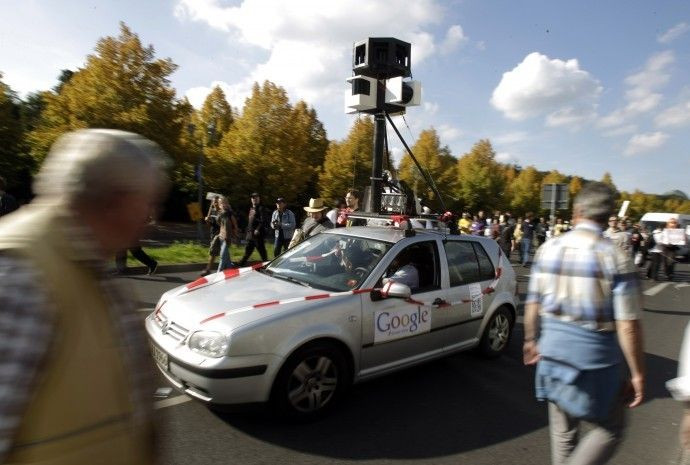Does driverless car mean road safety?

Remember watching all those futuristic sci-fi movies, which made your jaws drop with highly developed cars such as driverless varieties, ones with auto-drive capacities or ones that could fly? Well, the future seen in those movies may not be so far away after all as Google is close to making one of these cars a reality. The internet giant recently created a lot of buzz over the computer-driven cars, which it has been testing on the West Coast.
The Google Car:
In October 2010, Google revealed that it is has been working on a secret car project to enable drive without a driver. The only accident so far, engineers say, was when one such 'driverless' car was slammed from the back while waiting at a red light.
The car has also logged over 140,000 miles. It is said to have driven from the company's Mountain View campus to Santa Monica office and on to Hollywood Boulevard.
According to a Google blog post published in October, the cars use automated video cameras, radar sensors and a laser range finder to see other traffic, as well as detailed maps (which we collect using manually driven vehicles) to navigate the road ahead. This is all made possible by Google's data centers, which can process the enormous amounts of information gathered by our cars when mapping their terrain.
The cars, so far, have always had a human at the wheel, ready to take over at the first sign of trouble. This most certainly will not always be the case with computer-driven cars, however, as the technology develops and spreads. The possibilities for environmental conservation, economic advantages and safety improvements are vast. But numerous legal questions must be answered as well, Carty Law PA said in a statement, throwing light on the legal complexities of such a car.
Among the infinite possibilities that robot cars present, the legal issues that will arise when a computer-driven car is in a motor vehicle accident are complex, the statement argues.
Current Law
The researchers who planned the Google cars' trips researched the law before they set out. California, like other states, including Idaho, assumes that humans are driving all the cars on the road.
Google came to the conclusion that because a human is in the car and able to override the controls at any time, the cars were legal. The senior staff counsel for the California Department of Motor Vehicles shares their view, according to a New York Times article.
Even if robot cars - with humans at the wheel, ready to take over if necessary - are allowed to drive on the road, the question of who is liable in an accident remains unanswered. For example, Idaho's Rules of the Road state, The driver of a vehicle shall not follow another vehicle more closely than is reasonable and prudent ... (I.C. Section 49-638). But what if the computer is controlling the car when an accident occurs, and there is no human driver?
Liability in an Accident
So far, the only reported accident involving a Google car was due to another driver's (a human's) mistake: a Google car was rear-ended at a stoplight. Eventually, however, with crowded roads, unpredictable driving conditions and computer bugs, some computer-driven car will be involved a serious accident - in which both criminal and civil responsibility will be at issue.
The criminal law must either be adjusted to match emerging technology or reinterpreted. The civil liability issues will be complex because the new technology shifts at least some responsibility away from the human driver/passenger, if there is one, Carty Law PA informed.
Lawsuits arising from accidents involving computer-driven cars are likely to mirror contemporary lawsuits in terms of strategy. The plaintiff's attorney will look at who had control of the car at the time of the accident; the road conditions and who was responsible for them; and the actions of anyone else who contributed to the cause of the crash, including auto manufacturers.
In the case of computer-driven cars, the contributors will be somewhat different. They include any human in the car and other people who may have caused the crash; the manufacturer of the car; the designer of the car's software; the provider of any maps the car was relying on; and anyone else who contributed to technology that failed, contributing to the cause of the car accident.
Last year more than 12,000 people died in frontal crashes of passenger vehicles in the United States, more than 6,000 died in side impacts, and more than 8,000 died in rollovers, many of which also involved a front or side impact.
According to the World Health Organization (WHO), more than 1.2 million lives are lost every year in road traffic accidents and only technology and safety measures has the potential to cut the accident rate by half.
Speak With an Attorney
The days of driving alongside cars that have no drivers may not be as far away as we think. If you've been injured in an auto accident, no matter who was (or was not) driving, it is wise to speak with an attorney who can help you seek recovery, the personal jury law firm informed.
Though it is too early to comment on the success of these cars and the roadway safety, these projects are very much at the experimental stage, it provides a glimpse of what transportation might look like in the future. And that future looks very exciting going by this experiment.
© Copyright IBTimes 2024. All rights reserved.





















